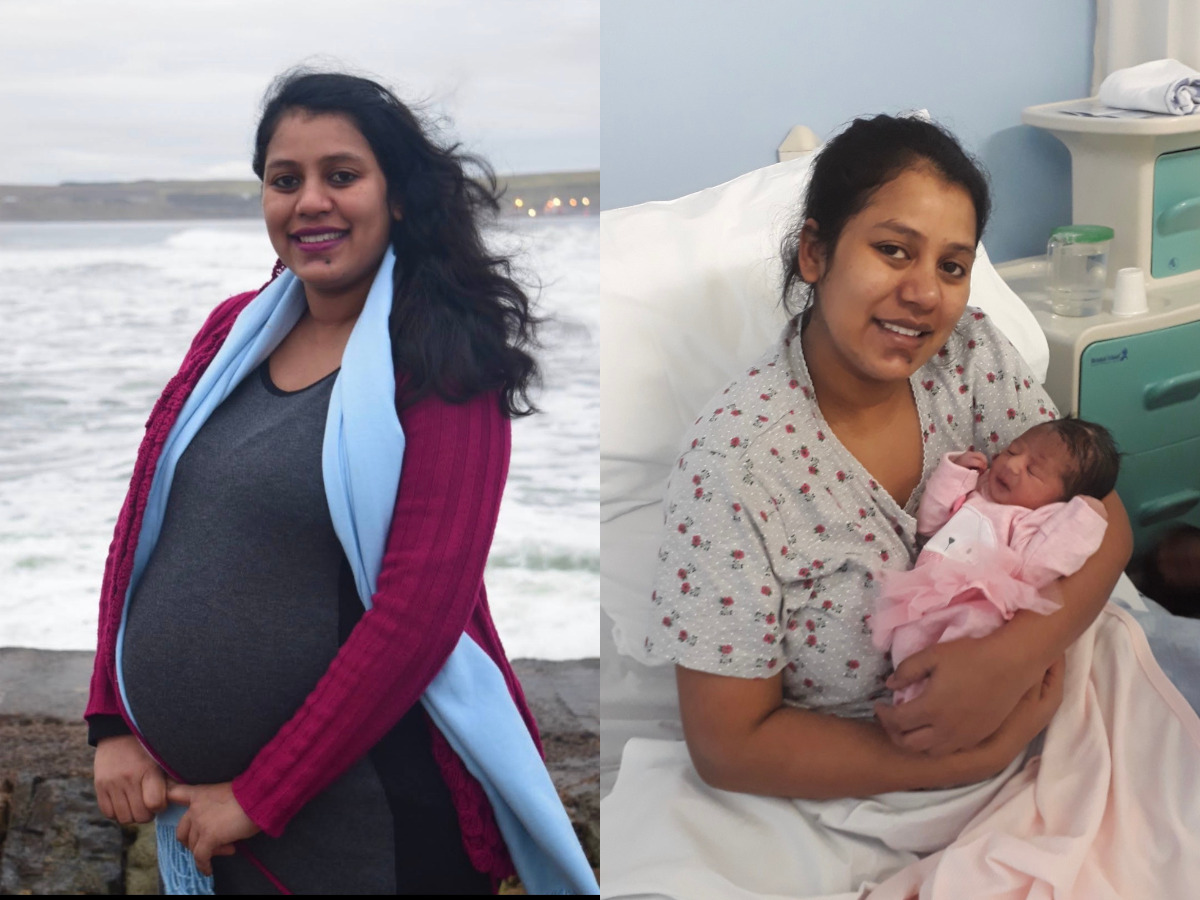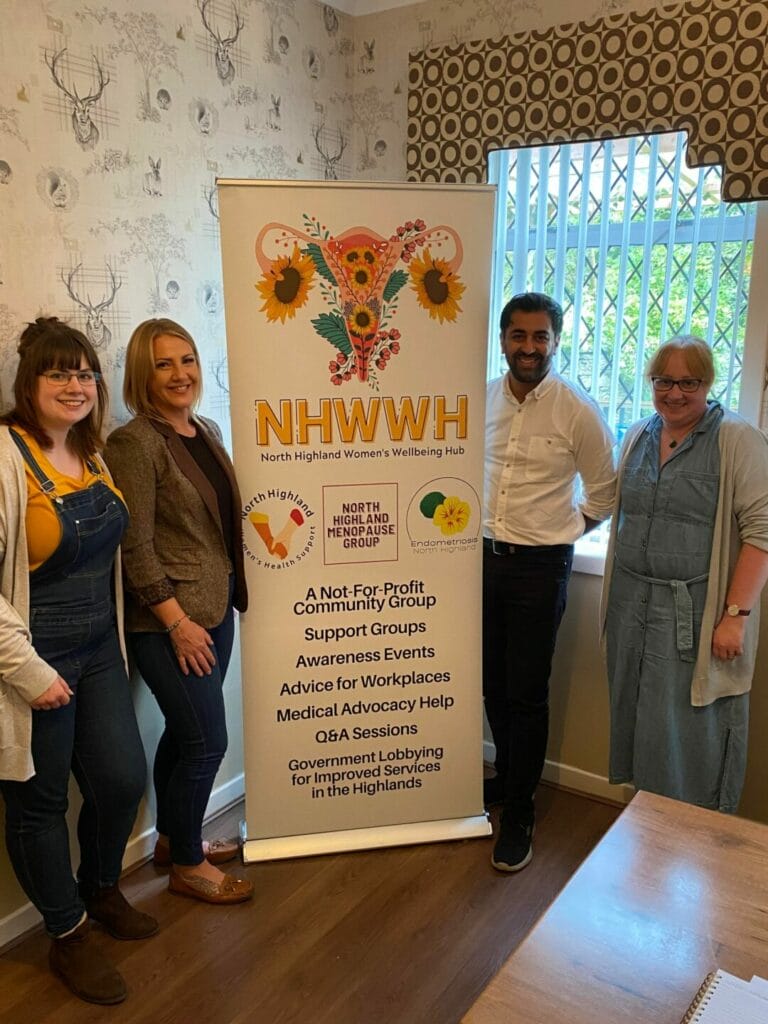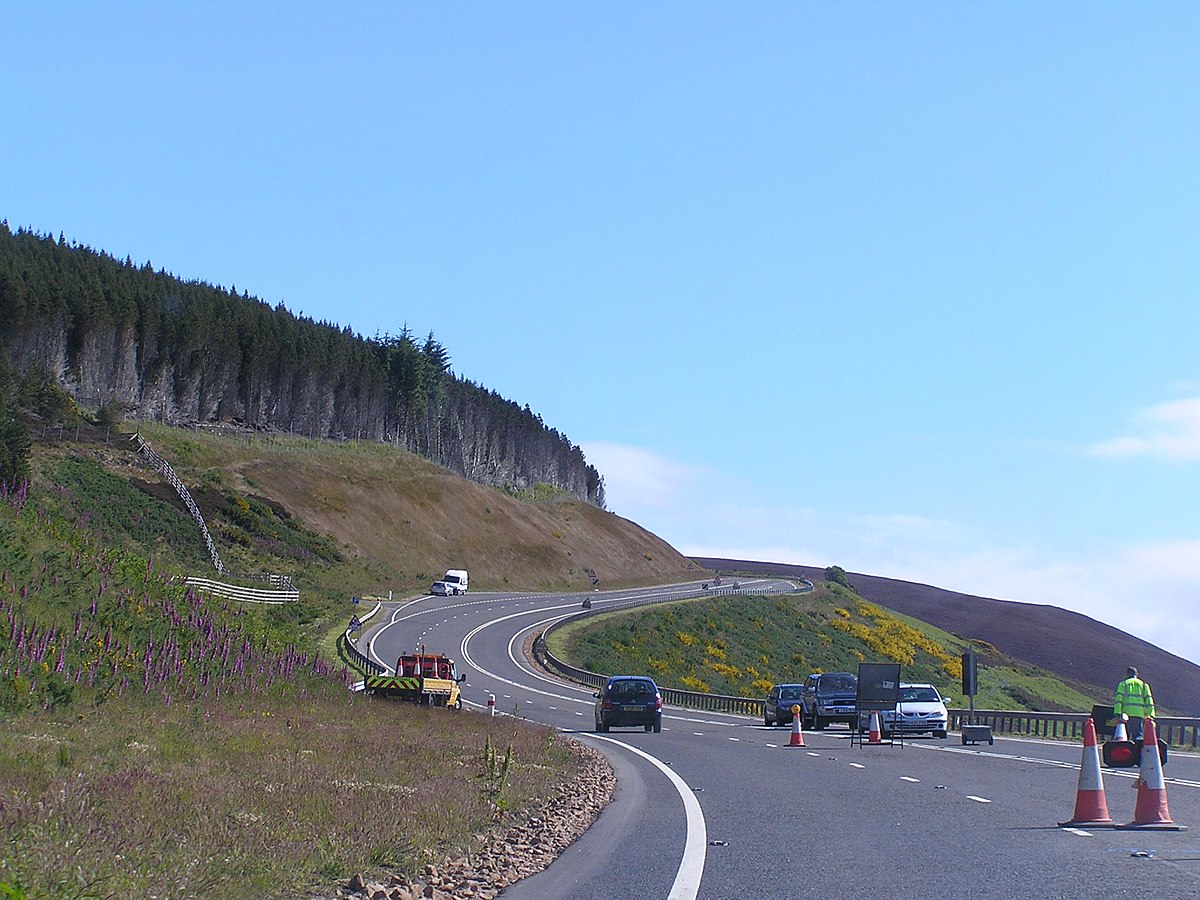On a freezing cold January afternoon in 2017, expectant mother Pranjali Christian felt her contractions start. It was four weeks before her due date and she tried to dismiss them as false labour pains – commonly known as Braxton Hicks – as she went about her day in her hometown of Thurso, on the north coast of Scotland.
But it got harder to ignore the increasingly intense pain and by 8 pm that evening, worried that something was “really wrong”, she phoned the midwife, based in Wick, a half hour drive away.
As she was still weeks from full-term pregnancy the midwife tried to reassure her telling her: “Don’t worry. Just go to sleep. Keep doing what you’re doing and if you need, give us a call back.” But a few hours later, Christian decided she had to be seen.
As she didn’t have a car – and had been told she could only use an ambulance in an emergency if she was in labour – she had arranged for a friend from church to drive her. But when they arrived at the midwife unit, Christian was told she was already two centimetres dilated.
“It was quite alarming,” she remembered.
The midwives told her, as it was four weeks prior to her due date, she needed to make the two-and-a-half-hour drive to Inverness down the A9 so she could be supported by a consultant.
If she had arrived just weeks earlier in Wick, she may not have had to make the trip.

In November 2016, NHS Highland took the decision to downgrade the consultant-led maternity unit at Caithness General Hospital, in Wick, to a midwife-led facility. By December, 24-hour cover by obstetricians had ceased — with all cover phased out by April 2017.
“I was there , and I predicted the impact on our obstetric and gynaecology services,” Kirsteen Campbell of the North Highland Women’s Wellbeing Hub told The Ferret.
Campbell was told that it wouldn’t hurt the service but she was not alone in her fears to the contrary. “There were medical professionals around that table that day who also had concerns, but no other options were looked at for Caithness,” she said. No vote was done. The chair of the board at the time just put it through.”
NHS Highland said in response that the establishment of a midwife-led Community Midwifery Unit (CMU) means that “care is being provided locally for women throughout the whole pregnancy journey”.
In 2022 only eight women had their babies at Caithness General’s midwife-led unit in Wick. In 2015, when the unit was consultant led there were 266 births there. A few more – less than five according to official figures – were born in the hospital’s accident and emergency unit but the vast majority of mothers gave birth over a hundred miles away in Inverness.
According to Caithness Health Action Team (CHAT), over 64 per cent of mums in Caithness wanted to give birth at their local midwifery unit in Wick, but only about three per cent were able to, due to there being no consultants present on the ward.
Women, said maternity campaigners, are scared of making the journey to Inverness, which they claim can be dangerous. In 2022, there were four fatalities on the A9 north of Inverness and the road was closed 19 times due to accidents, including those caused by deer running out in front of cars. Many places en route have no phone signal, there are no toilets available for labouring women to use, and in summer the road is busy with tourists.
Back in 2017 Pranjali Christian didn’t question the instruction to make her way to Inverness in the middle of the night, nervous about what could happen if something went wrong during, or after labour, without a doctor.
I told my husband I wouldn’t have more children until we moved away and had access to proper maternity services.
Pranjali Christian
As she made the dark, cold journey, Christian worked on her breathing to stay calm. But it was hard not to be anxious as she thought about how dilated she might be and worried about how much time she had until it would be time to push. She had to stop regularly to pee by the side of the road.
Her story ended well. An hour after arriving at Raigmore, Christian’s daughter Nicole was born.
“But the whole thing terrified me,” she recalled. “I told my husband I wouldn’t have more children until we moved away and had access to proper maternity services.”
Others still living in the northern Highlands have to make stark choices. These include travelling to Inverness before they are in labour, where they can either be induced (given drugs to start labour artificially) or undergo an elective c-section in Inverness.
The result is that the number of women forced to undergo surgery in order to give birth safely here is way above the national average.
In 2021, more than half (51 per cent) the births of women from Caithness were induced. The rest of Scotland was just 33 per cent and in the Highlands, it was 36 per cent. Statistics from 2022 – the most recent available – show that has decreased in the Highlands to 30 per cent.
Activist groups and mothers have claimed induction is encouraged by Raigmore Hospital because they cannot wait in Inverness until labour starts spontaneously due to the costs involved and their caring responsibilities for other children back at home.
But with inductions comes the increased risk of emergency c-sections, which 38 Caithness women underwent in 2021 at Raigmore. A further 21 per cent of births in the Highlands were by elective caesarean last year. The average is 18 per cent.

Kate, who asked for her name to be changed to protect her privacy, previously had three children naturally under the care of consultants at the hospital in Wick, prior to 2016.
When she became pregnant with her fourth child, due to give birth in February 2020, Kate found out she had an infection that could be passed onto the baby and would need to have an antibiotic drip during labour.
“That was me then, I wasn’t allowed to have the baby up here,” the 30-year-old remembered. “I would have to go to Raigmore.”
Scared of what the 100 mile-journey would mean for her safety and that of her unborn baby, Kate complied when doctors advised she be induced and went down to Inverness two days early, leaving their three other children in the care of family members.
“It just takes out that unknown scare of travelling that distance when it can be snowy or stormy,” she said. “They started me with a pessary ,” she said. “I wasn’t progressing fast enough so they put me on the drip . It was so painful – nothing like I had experienced with my other children. Then the baby got stuck – he was just too high up – and I had to have an emergency section. I was 24 hours in labour. It was really scary.”
Kate wished she could have had her baby in the local hospital at Wick and wonders if she and the baby had been given more time, if the birth could have happened naturally, avoiding induction and the emergency c-section.”
“I was really frustrated,” she said.
It isn’t just the commute during labour that mums are frustrated and scared by.
There are also concerns for mothers and babies with serious health conditions and in need of emergency medical intervention for placental abruption, ectopic pregnancy, twisted ovaries, and haemorrhages. Campaigners claim emergency aircraft transfers to hospital are not always available.
“In these circumstances you have such a tight time frame to save a life,” said Campbell.
Because our community is rural, it’s like we don’t matter. We are forgotten.
Maria Aitken, Caithness Health Action Team
Others have raised concerns about driving their newborn babies home from Inverness, or having to return to the city for follow-up care.
In response to concerns raised, NHS Highland told The Ferret that a review into the safety of neonatal care at Caithness General Hospital was conducted in 2016, and that “external independent specialist paediatric and obstetric input” was commissioned as part of the review process. Recommendations were presented to the NHS Highland Board in November 2016 and approved, a spokesperson for NHS Highland said.
“An integrated hub and spoke model for the delivery of both obstetrics and neonatal services has been developed with outreach from a central hub at Raigmore Hospital Inverness to other areas within north Highland, including Caithness and Sutherland,” the spokesperson added.
“The CMU is now fully established with care being provided locally for women throughout the whole pregnancy journey. Local birth is an option for women who have low-risk pregnancies, women with medical or pregnancy complications are referred to Raigmore Hospital, where consultant obstetric and neonatal services are available. All transfers are individually and carefully planned with our partner organisations and the family concerned with quality and patient safety being at the forefront of our consideration.”
For the last seven years Maria Aitken, secretary for Caithness Health Action Team (CHAT), has been campaigning for a consultant-supported midwifery unit in Caithness, meeting with health ministers, MPs, and MSPs to discuss concerns about the current model.
“The Lullaby Trust issued warnings to NHS Boards and parents on the risks to newborn babies being held in car seats for over two hours on their babies breathing and heart rates,” said Aitken. “CHAT and the community have raised funds to provide lay flat car seats for babies coming home to Caithness as parents and the tight knit community were so concerned about this.”
“But nothing changes,” she adds. “Because our community is rural, it’s like we don’t matter. We are forgotten. We truly believe that we are marginalised, excluded and discriminated because of our rural and remote population.”
Caithness’s neighbours across the water in Orkney had their maternity model reviewed at the same time as Caithness and found a solution that worked.
“They have a consultant supported midwifery unit that allows the majority of their mums to give birth locally with only a very small amount having to travel to Aberdeen to give birth,” Aitken said.
“They have all the safety measures in place and are confident in meeting all Best Start Standards; a promise given to all mums and their families in Scotland no matter where they live. The only issue stopping Caithness getting this maternity model are costs and time.”
The situation is very different in Caithness. In April 2023, plans to revamp maternity wards and services to the tune of nearly £9m were announced. But rather than more local services these were earmarked for enhanced maternity services at Raigmore Hospital in Inverness.
According to campaigners this is not what women need – they need services in their communities and the right to give birth safety in the place where they live.
Main image: ogwen














